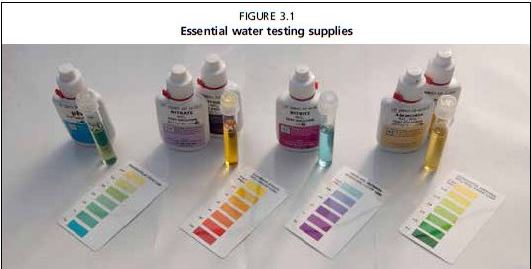3. Water quality in aquaponics
This chapter describes the basic concepts of managing the water within an aquaponic system. The chapter begins by setting the framework and comments on the importance of good water quality for successful aquaponic food production. Following this, the major water quality parameters are discussed in detail. Management and manipulation of some of the parameters are discussed, especially in regard to sourcing water when replenishing an aquaponic unit.
Water is the life-blood of an aquaponic system. It is the medium through which all essential macro- and micronutrients are transported to the plants, and the medium through which the fish receive oxygen. Thus, it is one of the most important topics to understand. Five key water quality parameters are discussed: dissolved oxygen (DO), pH, temperature, total nitrogen, and water alkalinity. Each parameter has an impact on all three organisms in the unit (fish, plants and bacteria), and understanding the effects of each parameter is crucial. Although some aspects of the knowledge on water quality and water chemistry needed for aquaponics seem complicated, the actual management is relatively simple with the help of simple test kits (Figure 3.1).
Water testing is essential to keeping good water quality in the system.
FIGURE 3.1
Essential water testing supplies
